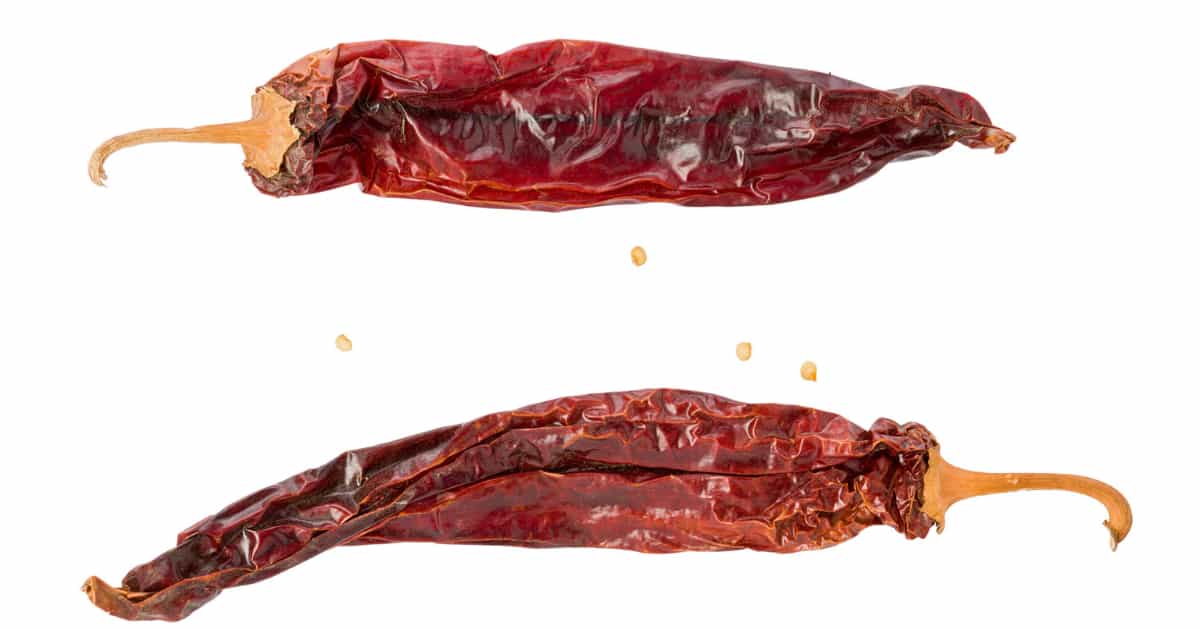Do you love the taste of New Mexico chili powder but find yourself out of it? Don't worry, we've got you covered! There are many substitutes you can use to replace this special spice blend without sacrificing flavor.

Before we go into the substitutes, let's first understand what exactly New Mexico chili powder is. This spice blend is made from dried New Mexico chilies, which are a type of chile pepper grown in the Hatch Valley of New Mexico. These chilies have a unique flavor that is earthy, sweet, and slightly acidic, with hints of grassiness and dried cherry undertones.
New Mexico chili powder has a mild heat level, ranging from 800 to 1,400 Scoville Heat Units (SHU). It's commonly used in Southwestern and New Mexican cuisine, adding a distinct flavor to dishes like carne adovada, chili, enchiladas, salsas, and stews.
1. Make Your Own Chili Powder Mix
One of the best substitutes for New Mexico chili powder is to make your own homemade chili powder mix. This way, you can control the ingredients and adjust the flavors to your liking. Here's a simple recipe:
- 2 tablespoons paprika
- 1/2 tablespoon cumin
- 1/2 tablespoon garlic powder
- 1 teaspoon onion powder
- 1 teaspoon oregano
- 3/4 teaspoon cayenne pepper
Simply mix all these spices together, and you'll have a flavorful chili powder blend. If you want a smoky flavor, you can add a dash of chipotle powder or smoked paprika.
Key Takeaway: Making your own chili powder mix allows you to customize the flavors and heat level to your preferences.
2. Use Paprika, Cumin, and Cayenne
If you don't have all the spices needed for a homemade chili powder mix, you can still create a decent substitute by combining paprika, cumin, and cayenne. Here's the ratio to use:
- For every 1 tablespoon of chili powder, use:
- 2 teaspoons paprika
- 1 teaspoon cumin
- A scant 1/4 teaspoon cayenne pepper
This combination will provide a similar flavor profile to New Mexico chili powder, with a mild heat level. You can adjust the amount of cayenne pepper based on your desired spice level.
3. Chipotle Chili Powder
If you're looking for a smoky and spicy substitute, chipotle chili powder is an excellent option. This powder is made from smoked, dried jalapeño peppers, giving it a rich, smoky flavor with a significant kick of heat.
When using chipotle chili powder as a substitute, it's important to use it sparingly. For every 1 tablespoon of New Mexico chili powder called for in a recipe, use only 1/2 teaspoon of chipotle chili powder.
Alternatively, you can combine chipotle chili powder with paprika and cumin for a more balanced flavor. Use the following ratio:
- 1 1/2 teaspoons paprika
- 1 teaspoon cumin
- 1/2 teaspoon chipotle chili powder
4. Pepper Jelly
If you're looking for a sweet and spicy substitute, pepper jelly can be a great option. Pepper jelly is a popular condiment in the Southern United States, made by combining peppers, vinegar, and sugar.
When using pepper jelly as a substitute for New Mexico chili powder, you'll want to use a hot pepper jelly recipe. Combine jalapeño, poblano peppers, red bell pepper, apple cider vinegar, salt, sugar, and pectin. Cook until the pectin is fully incorporated, and then allow it to cool.
The pepper jelly will add a sweet and tangy flavor to your dishes, along with a mild to moderate heat level, depending on the peppers used.
Key Takeaway: Pepper jelly is a unique and flavorful substitute for New Mexico chili powder, adding sweetness and heat to your dishes.
5. Togarashi
Togarashi, also known as shichimi togarashi, is a Japanese spice blend that can make a great substitute for New Mexico chili powder. This blend typically includes citrus peels, nori, poppy seeds, sesame seeds, ground red pepper, sansho pepper, and ground ginger.
While the flavor profile of togarashi is quite different from New Mexico chili powder, it still provides a similar level of heat and complexity. Togarashi imparts a slightly citrusy and umami flavor, which can be a welcome addition to many dishes.
When using togarashi as a substitute, start with a small amount and adjust to taste, as it can be quite potent.
6. Berbere
Berbere is a spice blend commonly used in Ethiopian cuisine, and it can also work as a substitute for New Mexico chili powder. This blend typically includes allspice berries, black peppercorns, cardamom, cloves, coriander, onion powder, and chili flakes.
Berbere has a robust and earthy flavor, with a moderate heat level. It will impart a distinct African flair to your dishes, but it can still be a suitable substitute in a pinch.
When using berbere as a substitute, start with a small amount and adjust to taste, as it can be quite potent and flavorful.
7. Tajin Seasoning
Tajin seasoning is a popular Mexican spice blend that can be used as a substitute for New Mexico chili powder. This blend typically includes dried chilies, salt, and dehydrated lime juice.
While Tajin seasoning has a different flavor profile than New Mexico chili powder, it can still provide a similar level of heat and a unique, tangy flavor. Tajin is often used as a seasoning for fruits, such as watermelon, mango, and pineapple, but it can also be used in savory dishes.
When using Tajin as a substitute, start with a small amount and adjust to taste, as it can be quite potent and flavorful.
8. Chili Oil
Chili oil is a flavorful and versatile condiment that can be used as a substitute for New Mexico chili powder. This oil is made by infusing a neutral oil with dried chilies, garlic, and other spices.
While chili oil will not provide the same depth of flavor as New Mexico chili powder, it can still add a nice kick of heat and a subtle chili flavor to your dishes. Chili oil can be found in the Asian section of most grocery stores, or you can make it at home by infusing oil with dried chilies and spices.
When using chili oil as a substitute, start with a small amount and adjust to taste, as it can be quite potent and flavorful.
9. Sambal Oelek
Sambal oelek is an Indonesian chili paste that can be used as a substitute for New Mexico chili powder. This paste is made from fresh chilies, vinegar, and salt, and it packs a significant punch of heat and flavor.
While sambal oelek has a distinct Asian flavor profile, it can still be used as a substitute for New Mexico chili powder in a pinch. It will provide a similar level of heat and a unique, tangy flavor to your dishes.
When using sambal oelek as a substitute, start with a small amount and adjust to taste, as it can be quite potent and flavorful.
10. Sriracha
Sriracha is a popular Thai chili sauce that can be used as a substitute for New Mexico chili powder. This sauce is made from fresh chilies, garlic, vinegar, and other spices, and it has a distinct flavor profile that is both spicy and tangy.
While sriracha has a distinct Asian flavor profile, it can still be used as a substitute for New Mexico chili powder in a pinch. It will provide a similar level of heat and a unique, tangy flavor to your dishes.
When using sriracha as a substitute, start with a small amount and adjust to taste, as it can be quite potent and flavorful.
11. Tabasco Sauce
Tabasco sauce is a popular hot sauce that can be used as a substitute for New Mexico chili powder. This sauce is made from aged red peppers, vinegar, and salt, and it has a distinct flavor profile that is both spicy and tangy.
While Tabasco sauce has a distinct flavor profile, it can still be used as a substitute for New Mexico chili powder in a pinch. It will provide a similar level of heat and a unique, tangy flavor to your dishes.
When using Tabasco sauce as a substitute, start with a small amount and adjust to taste, as it can be quite potent and flavorful.
12. Fresh Red Chilies
If you have access to fresh red chilies, you can use them as a substitute for New Mexico chili powder. Fresh chilies will provide a similar level of heat and a unique, fresh flavor to your dishes.
When using fresh chilies as a substitute, you will need to chop or mince them and add them to your dish. You can also toast and grind them into a powder to mimic the texture of New Mexico chili powder.
When using fresh chilies as a substitute, start with a small amount and adjust to taste, as they can be quite potent and flavorful.
13. Chili Crisp
Chili crisp is a popular Chinese condiment that can be used as a substitute for New Mexico chili powder. This condiment is made from a combination of dried chilies, garlic, onions, and spices, and it has a unique texture that is both crunchy and spicy.
While chili crisp has a distinct Asian flavor profile, it can still be used as a substitute for New Mexico chili powder in a pinch. It will provide a similar level of heat and a unique, crunchy texture to your dishes.
When using chili crisp as a substitute, start with a small amount and adjust to taste, as it can be quite potent and flavorful.
14. Ancho Chili Powder
Another unique substitute for New Mexico chili powder is ancho chili powder. Ancho chilies are dried poblano peppers, and they have a distinct, slightly fruity flavor with a moderate heat level.
Ancho chili powder is a common ingredient in Mexican cuisine, and it can be used to add depth and complexity to a wide variety of dishes. While it may not have the same earthy, sweet undertones as New Mexico chili powder, it can still provide a rich, smoky flavor that can complement many dishes.
When using ancho chili powder as a substitute, start with a small amount and adjust to taste, as it can be quite potent and flavorful. You may also want to consider adding other spices, such as cumin or oregano, to round out the flavor profile and bring it closer to that of New Mexico chili powder.
| Substitutes | Flavor Profile | Heat Level |
|---|---|---|
| Homemade Chili Powder Mix | Customizable | Mild to Moderate |
| Paprika, Cumin, and Cayenne | Earthy, Warm | Mild |
| Chipotle Chili Powder | Smoky, Spicy | Hot |
| Pepper Jelly | Sweet, Tangy | Mild to Moderate |
| Togarashi | Citrusy, Umami | Moderate |
| Berbere | Robust, Earthy | Moderate |
| Tajin Seasoning | Tangy, Spicy | Mild to Moderate |
| Chili Oil | Subtle Chili Flavor | Mild to Moderate |
| Sambal Oelek | Tangy, Spicy | Hot |
| Sriracha | Tangy, Spicy | Hot |
| Tabasco Sauce | Tangy, Spicy | Hot |
| Fresh Red Chilies | Fresh, Spicy | Mild to Hot |
| Chili Crisp | Crunchy, Spicy | Moderate to Hot |
FAQs
What is New Mexico chili powder made of?
New Mexico chili powder is made from dried New Mexico chilies, which are a type of chile pepper grown in the Hatch Valley of New Mexico. It has a mild heat level and a unique flavor profile that is earthy, sweet, and slightly acidic.
Can I use regular chili powder as a substitute for New Mexico chili powder?
Regular chili powder is a blend of dried chilies and spices, and it can be used as a substitute for New Mexico chili powder in a pinch. However, it will not have the same unique flavor profile as New Mexico chili powder.
Can I use cayenne pepper as a substitute for New Mexico chili powder?
Cayenne pepper can be used as a substitute for New Mexico chili powder, but it should be used sparingly as it is much hotter than New Mexico chili powder. Start with a small amount and adjust to taste.
Is New Mexico chili powder gluten-free?
Yes, New Mexico chili powder is generally gluten-free as it is made from dried chilies and spices. However, it is always a good idea to check the label for any potential cross-contamination.
How long does New Mexico chili powder last?
New Mexico chili powder can last for 6-12 months when stored in an airtight container in a cool, dark place.
Conclusion
While nothing can truly replicate the unique flavor of New Mexico chili powder, these 14 alternatives can help you create delicious dishes. From homemade chili powder mixes to spicy condiments like sambal oelek and chili crisp, there are many options to choose from.
Remember, when using these substitutes, start with a small amount and adjust to taste, as they can be quite potent and flavorful. And don't be afraid to experiment and find the substitute that works best for your taste preferences and the dish you are preparing.

